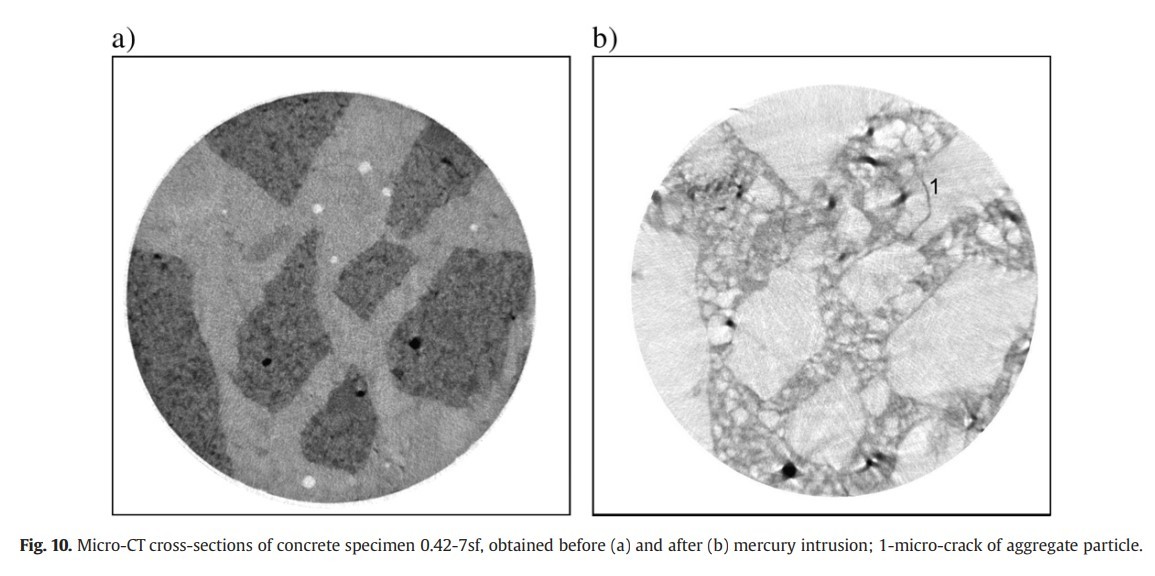The microstructure of building materials importantly influences engineering properties like permeability, strength and durability. To determine this microstructure, different techniques were developed, each with its own limitations. The purpose of this study on concrete and natural building stones was to compare and to combine data obtained by X-ray computed micro-tomography (micro-CT), water absorption under vacuum and mercury intrusion porosimetry (MIP). Pore-size distribution curves ranging from 10 nm to 1 mm and total porosity results were obtained. Furthermore, micro-CT revealed the presence of an interfacial transition zone (ITZ) and of micro-cracks inside the aggregates of the concrete samples after mercury intrusion. Micro-CT visualized mercury inside large air bubbles within the concrete samples. Both microCT and MIP were compared and their respective advantages and disadvantages discussed.
Keywords: Concrete, natural building stone, mercury intrusion porosimetry, X-ray computed micro-tomography, porosity.
For full text click here.




